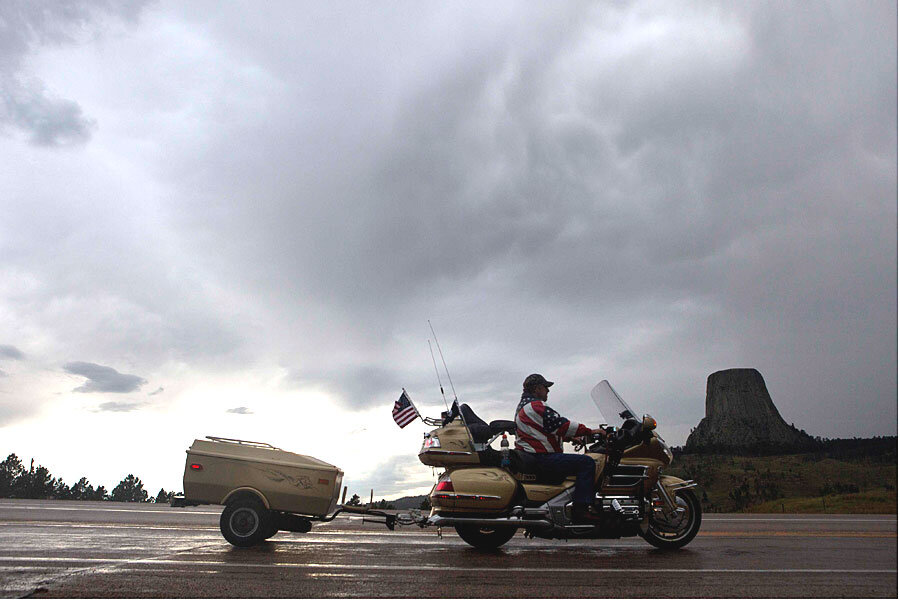Does Wyoming value tourists more than its tribes?
Loading...
In the desolate plains of northeast Wyoming, a natural landmark with a malevolent name poses a serious quandary.
Standing at 900 feet, the iconic rock formation in the Black Hills is religiously and culturally significant to local Indian tribes. The United States recognizes it as Devils Tower, a name originally thought to be the direct translation from what native Americans called it. But as Reuters reports, that was a mistake:
In 1906, when the formation became the first in the country to be designated as a national monument, its name was based on a mistranslation of its Indian title, according to the National Park Service.
An interpreter with an 1875 expedition by a U.S. Army colonel told him the term meant "Bad God's Tower," later shortened to Devils Tower.
Now, Chief Arvol Looking Horse, spiritual leader of the Great Sioux Nation, is leading an effort to change the name. He says it is offensive and suggests native Americans practiced devil worship. Other spiritual leaders and more than a dozen tribes have joined the effort.
Looking Horse has written to President Obama and the US Board on Geographic Names requesting that it be renamed Bear Lodge, in reference to the title of a national forest nearby.
But Wyoming politicians are against that idea. Why? According to Reuters, it would hurt tourism:
Last week, the state's congressional delegation floated a bill that would block a name change. Tourism officials say Devils Tower is important to Wyoming's branding campaigns.
"We've worked very hard to make sure some of the state's assets are easily recognizable to both domestic and international audiences," said Chris Mickey, spokesman for the Wyoming Office of Tourism.
According to The Associated Press, US Senators Mike Enzi and John Barrasso and Representative Cynthia Lummis introduced a proposal last week to prevent a name change.
A US panel planned to review Looking Horse’s request in 2016, but that is in limbo while the federal legislation preventing a name change makes its way through congress.
The situation puts the wishes of the indigenous population in direct conflict with the interests of other, non-native locals who profit from the site. But the lack of regard for native American traditions when it comes to naming is not uncommon.
National Geographic pointed to three other landmarks with controversial names, including Harney Peak (a South Dakota mountain named for a particularly brutal Army general whom Lakota tribes blame for killing 86 people), Mt. St. Helens (given the name of a British Ambassador to Spain), and Mt. Rainer (named after a member of the British Royal Navy who ended up fighting against the US in the Revolution).
The Huffington Post listed others as well, including the Grand Canyon and Yosemite. The name Yosemite actually refers to a native American tribe as killers:
While in pursuit of the Ahwahneechee in 1851, a battalion of California soldiers became the first European-Americans to set foot in the region. The battalion renamed the valley Yosemite, borrowing the Miwok term for the Ahwahneechee: yohhe'meti, which means "they are killers." That would later become the name of the national park when it was created in 1890.
Last month, Mr. Obama issued an executive order to change the name of North America’s tallest mountain from Mt. McKinley (after the president who had no apparent connection to Alaska or the mountain) to its original name used by Alaska natives: Denali, or “the High One."
Material from Reuters was used in this article.





